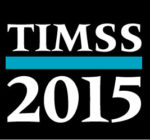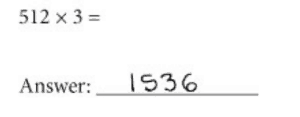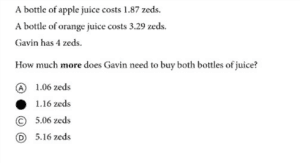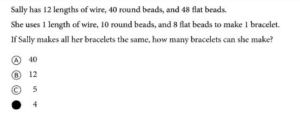As the standardized testing season approaches, we present readers a special edition of Throwback Thursday featuring one of our more popular posts. Here, Beth Curran addresses common questions and misconceptions on the topic of Test Preparation. As a teacher, I encouraged my students to welcome their annual opportunity to “show what they know.”
Test Prep: Is it really necessary?
Originally published February 16, 2017
For many, Spring brings with it those two dreaded words: standardized tests.
Whether your s chool is required to take PARCC, Smarter Balanced, state mandated standards-based tests or ERBs, you inevitably will want to make sure your students are prepared. Many teachers will plan to block out two to three weeks prior to the testing dates to review and teach content that may not have been covered, but is this interruption to instruction necessary?
chool is required to take PARCC, Smarter Balanced, state mandated standards-based tests or ERBs, you inevitably will want to make sure your students are prepared. Many teachers will plan to block out two to three weeks prior to the testing dates to review and teach content that may not have been covered, but is this interruption to instruction necessary?
It’s estimated that students and teachers lose an average of 24 hours of instructional time each year administering and taking standardized tests. This doesn’t include time taken out of the instructional day for test prep so that number may even be quite higher.
Q: But, I need to review to make sure my students remember concepts taught at the beginning of the year.
A: Not if you have been teaching to mastery.
Teaching math with a mastery-based program that is rich in problem-solving may all but eliminate the need for any test prep or review. If your students have a solid foundation in the basics and have practiced applying that knowledge to solving problems throughout the school year, then nothing a standardized test can throw at them should be unachievable. With a cohesive curriculum, where concepts build on each other, your students have essentially been revisiting concepts throughout the year. So, trust in what your students have learned and skip the review.
Q: What about going over topics that I haven’t covered yet?
A: How much success have you had cramming for an exam?
If material is thrown at students for the sake of a test a few things can happen.
- Students won’t retain information. If students have not been given enough time to progress through the concrete-representational-abstract phases of learning, they will likely not be able to recall concepts or apply those concepts to the unfamiliar situations they might encounter on the standardized test.
- Students will be stressed out. They will feel the pressure (that unfortunately, you are likely feeling as well) to get a good score on the test. Learning becomes just something to do for a test.
- You will get false positive results. Have you ever had the teacher in the next grade up comment that students couldn’t remember a concept that you know you taught? Or, better yet, had test scores reflect learning, but students couldn’t perform at the next grade level? That can be a result of concepts being taught too quickly.
So, rather than block out a few weeks to cram in topics that you haven’t covered, try integrating them into other areas of your day. Do some data analysis in morning meeting. Add some questions about telling time to your calendar activities. Play with measurement and geometry during recess (The weather is getting nice, right?).
If you follow the sequence in your well-thought-out curriculum and teach some of those missing concepts after testing, it’s ok. Your students will experience those concepts in an order that makes sense and will be able to make connections, apply their thinking and master those concepts. That mastery will stay with them into the next year and will be reflected on upcoming standardized tests.
After all, we don’t stop teaching after standardized tests. Well… that’s probably a topic for another post.
photo courtesy of Alberto G.























